Unit 5 Grids v24.pptx
1/49
There's no tags or description
Looks like no tags are added yet.
Name | Mastery | Learn | Test | Matching | Spaced |
|---|
No study sessions yet.
50 Terms
(REVIEW) Field size controlled by…
Aperture diaphragms, Cones, Collimators, Automatic and Positive Beam Limiting Devices
(REVIEW) What does a Positive Beam Limiting Device do?
Limits field size to the size of IR
What can be used to control scatter in radiographic imaging? (NOTE: Referring to the Inherent and Added filters)
Filters.
(REVIEW) What result do filters have on the primary beam reaching the patient? (NOTE: Referring to the Inherent and Added filters)
They harden the primary beam.
(REVIEW) How do filters contribute to controlling scatter? (NOTE: Referring to the Inherent and Added filters)
By hardening the primary beam reaching the patient.
What result does decreasing the field size and filters have on scatter radiation?
Significantly decreases the amount of scatter radiation produced when the photons interact with the patient.
Despite using filters and reducing field size, what still influences scatter radiation leaving the patient?
Object thickness and density (tissue composition).
(REVIEW) What percent of the density of the radiograph is the result of scatter
radiation
50-90%
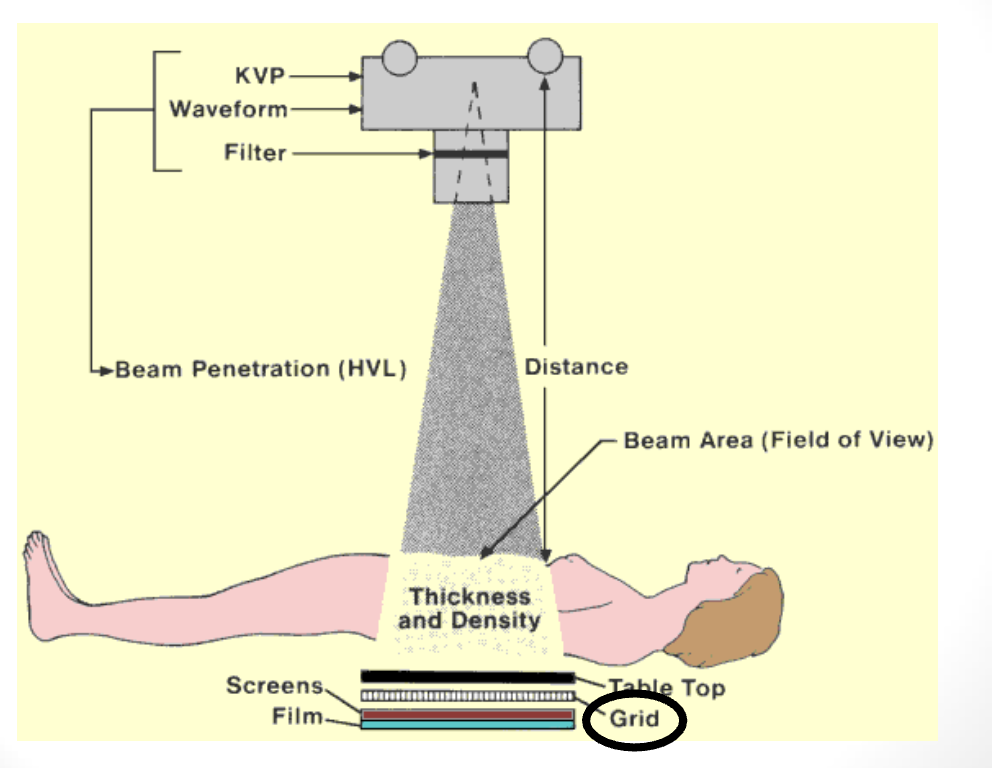
What is the objective of using Grids in radiography?
To minimize the amount of scattered radiation coming from the patient before it reaches the IR.
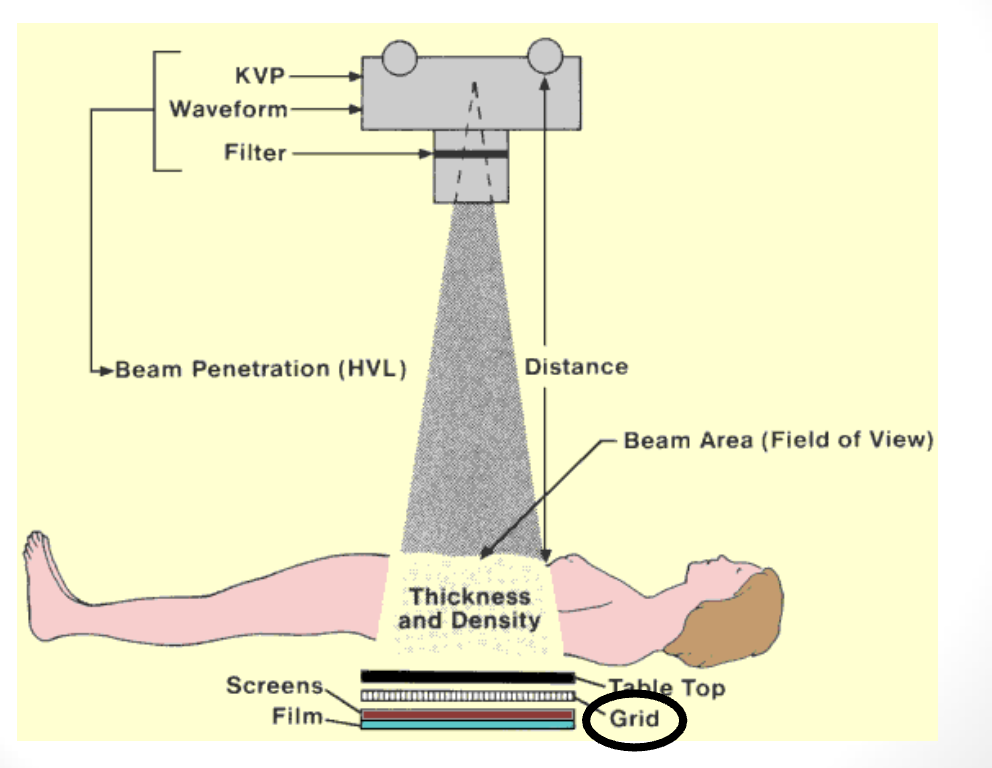
How do Grids improve radiographic contrast?
By reducing the amount of scattered radiation reaching the IR.
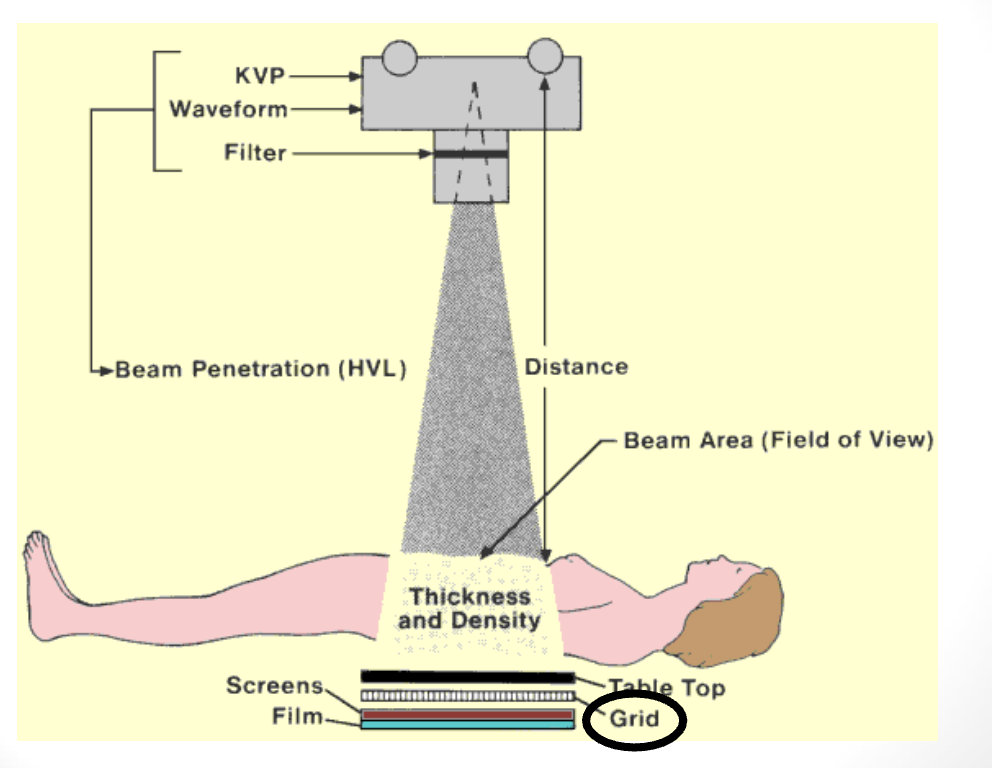
What is the result of improving contrast with grids?
Detail is no longer obscured.
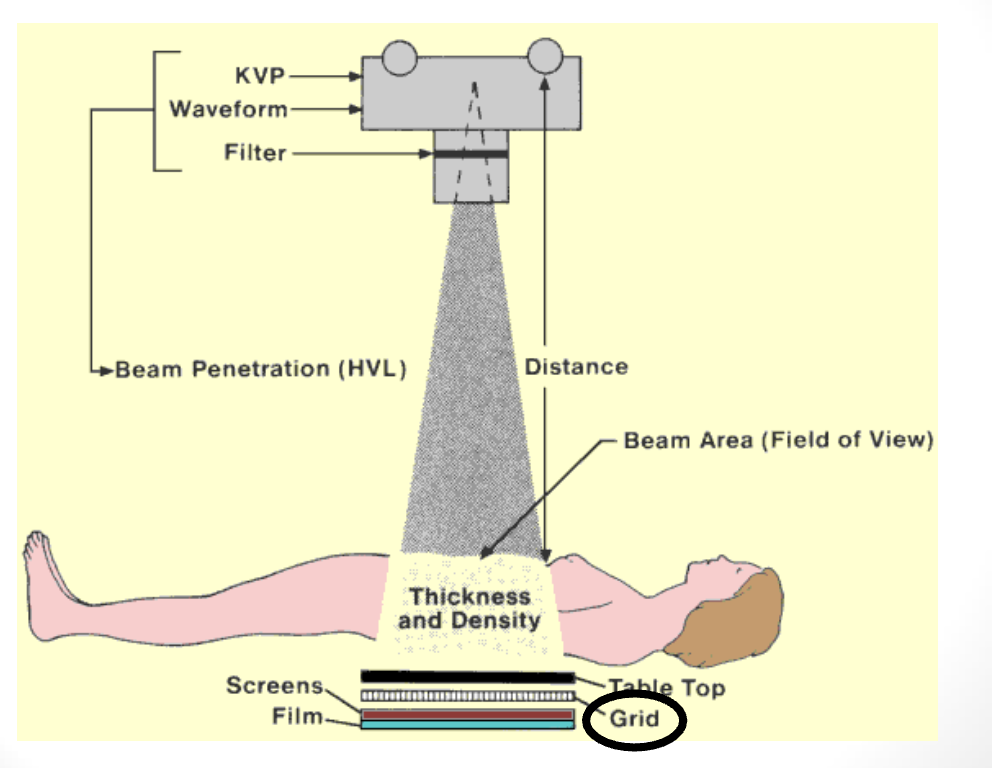
Where is the Grid placed?
Between the patient and the IR
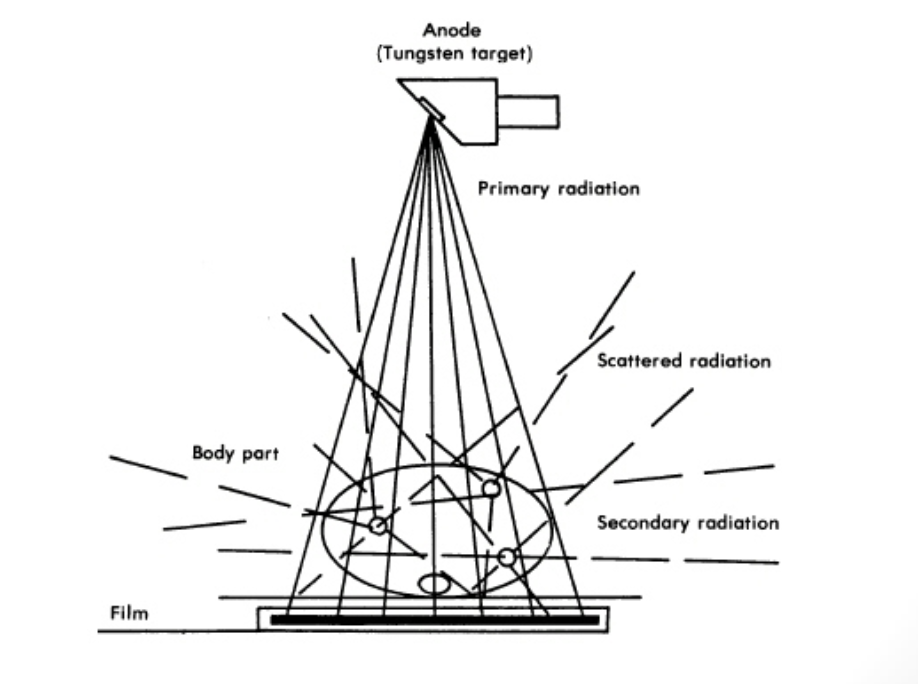
What happens as the primary beam passes through the patient?
Many photons are scattered in many different directions.
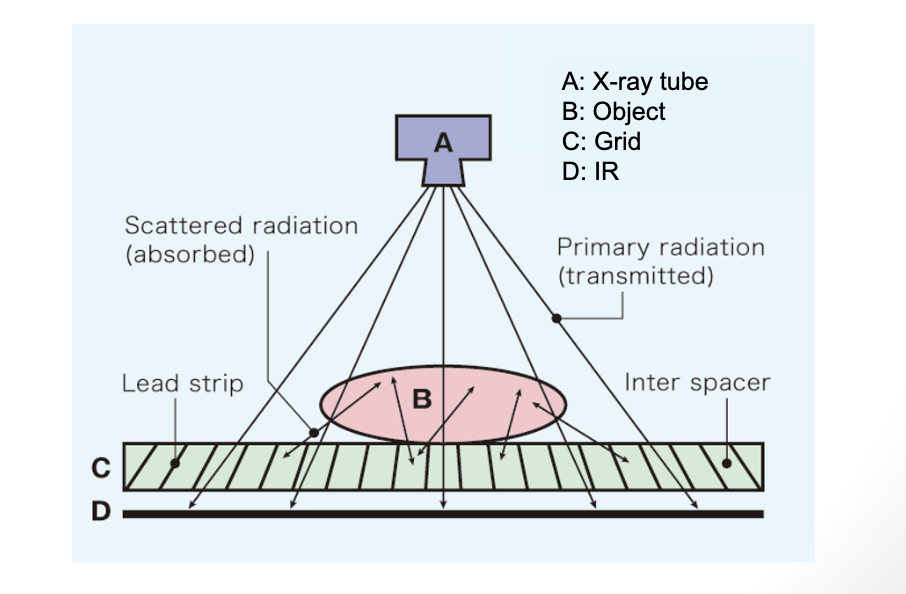
What does a Grid ALLOW to reach the IR?
Allows straighter photons (remnant radiation carrying the aerial image).
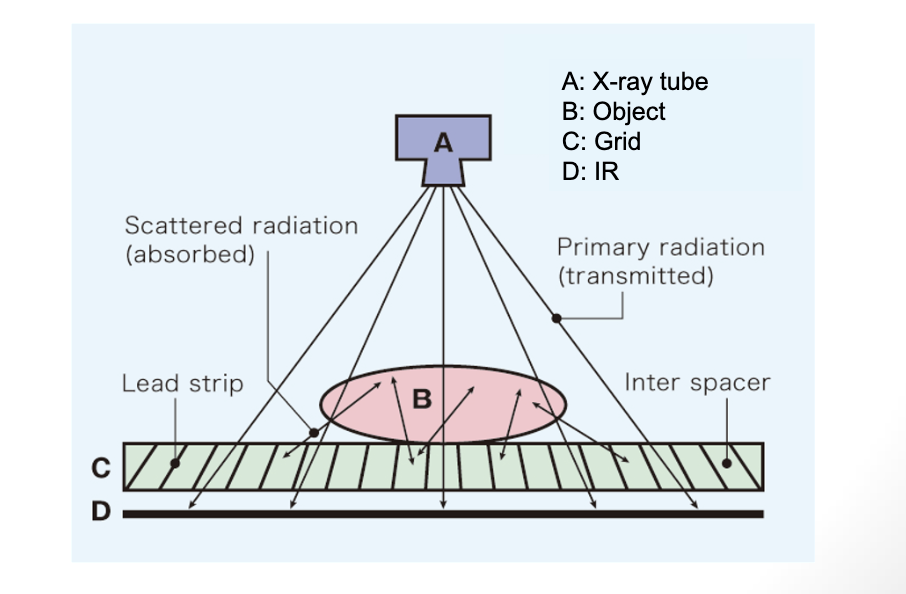
What does a Grid ABSORB in radiography?
Absorbs photons not carrying useful information (scatter).
Grids are for body parts greater than…
10 cm
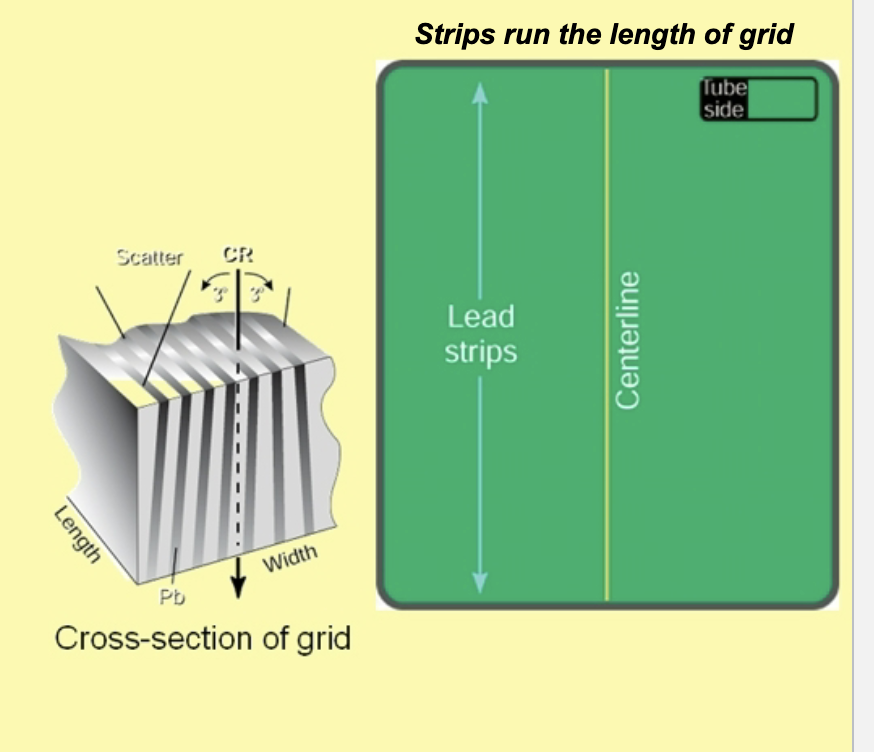
How are lead strips placed on a Grid
Parallel to centerline
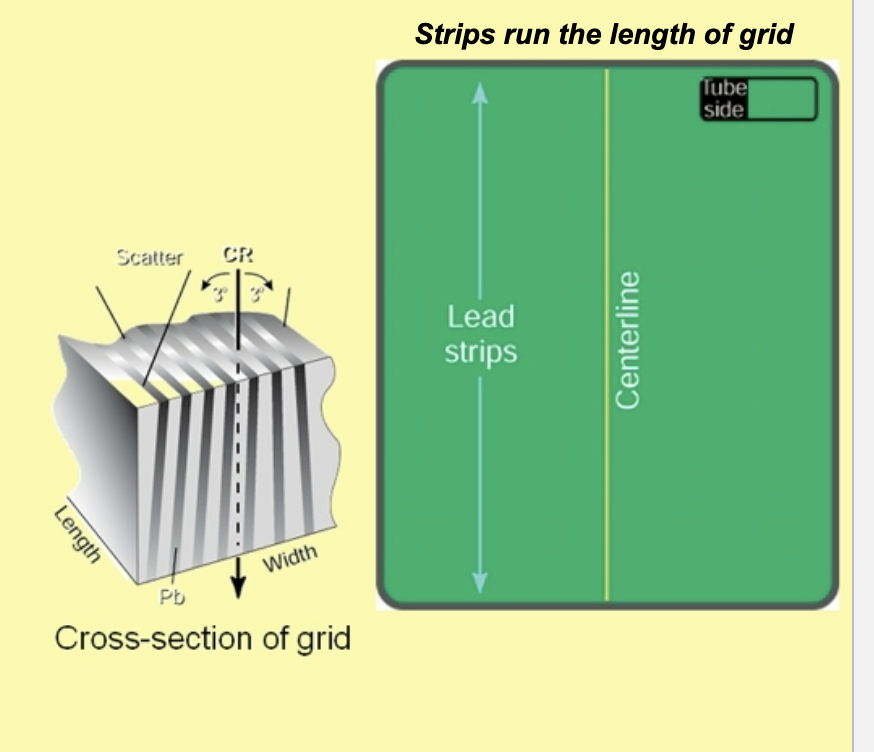
Why are Grids useful?
Absorbs scatter radiation which improves visibility of detail
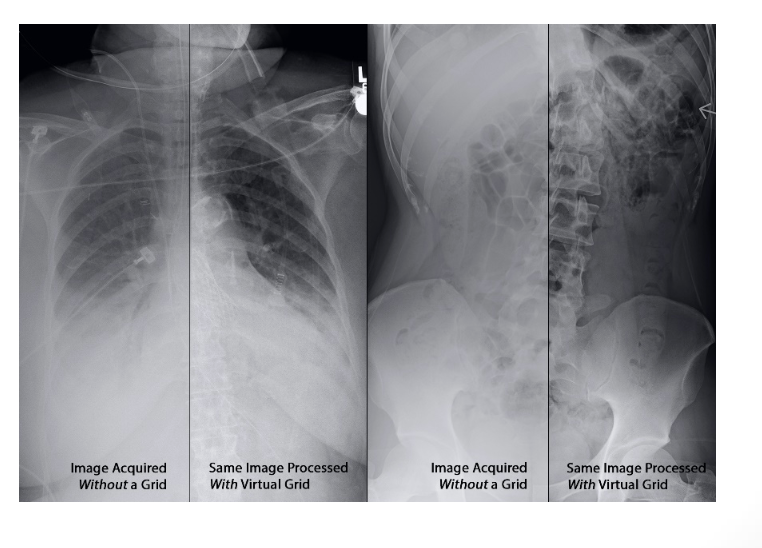
***What effect does scatter radiation have on density?
***Scatter radiation increases density.
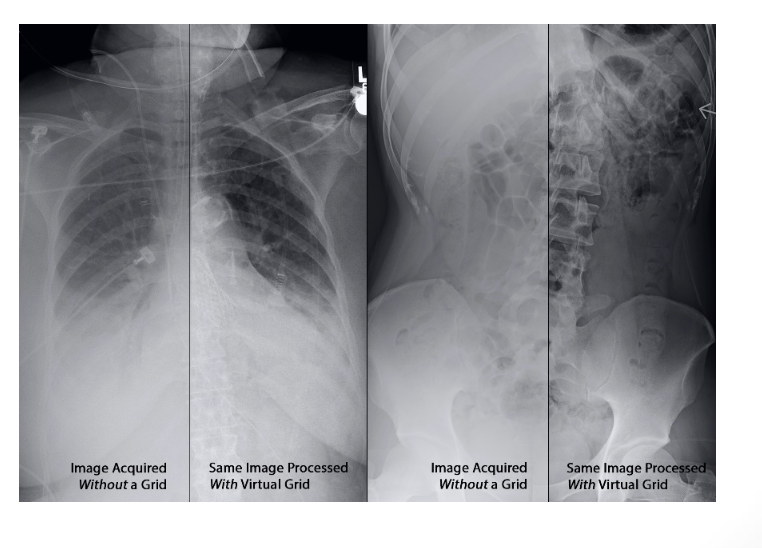
***What effect does using a Grid have on image density?
***Using a grid will decrease it. (NOTE: This is because the grid absorbs some of the primary radiation, which can lead to a reduction in overall exposure on the film.)
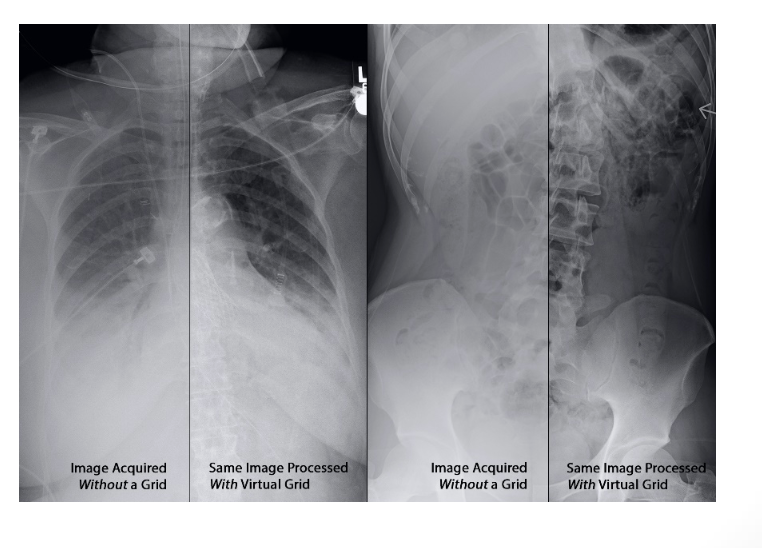
***Why must higher technical factors be increased when using a Grid?
***To compensate for that loss of density.
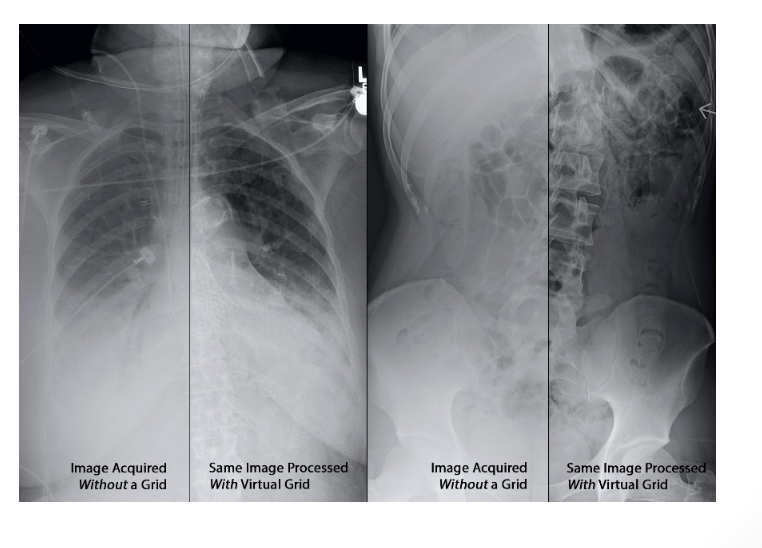
***What is the result of increasing technical factors to compensate for Grid use?
***Patient exposure is increased.
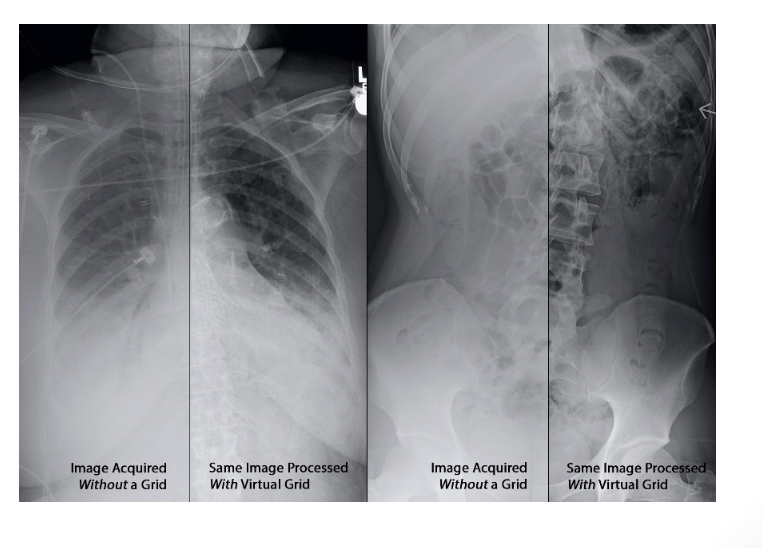
***For what body parts are Grids used?
***Body parts >10 cm (skull, abdomen, spine, pelvis, femur, sternum and ribs).
When were Grids invented and by who?
Invented in 1913 by Gustave Bucky
What are Grids constructed with?
Extremely thin, closely spaced lead strips (placed vertically or slanted) separated by radiolucent material.
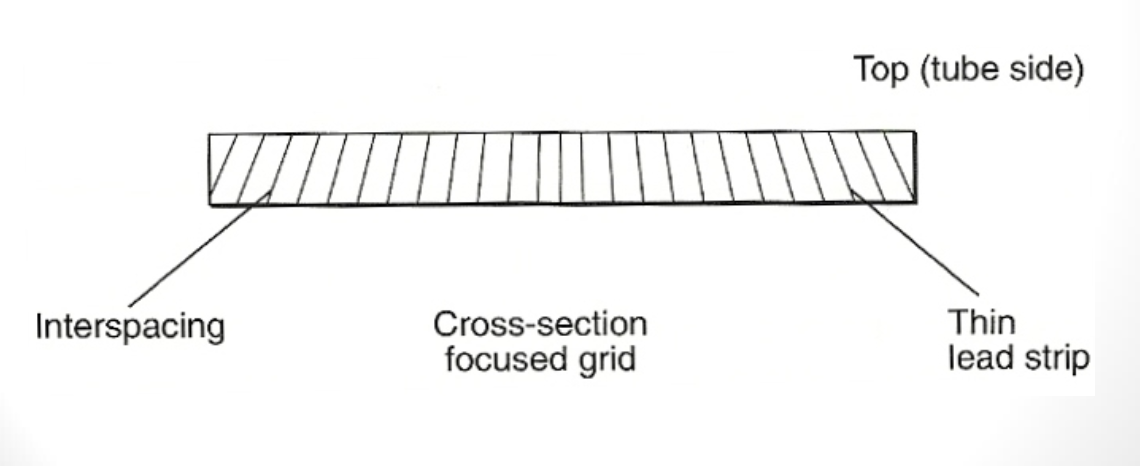
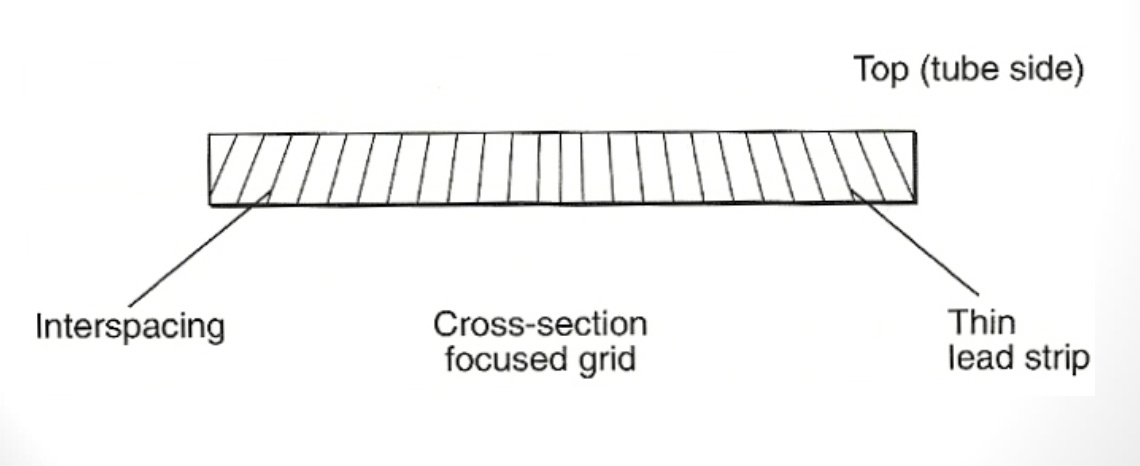
What materials separate the lead strips in a Grid?
Plastic, aluminum, fibrous material.
What is the Advantage of using Grids
Increase contrast by reducing scatter radiation reaching the IR. (NOTE: Using a grid increases contrast by absorbing scatter, but it also decreases image density. To compensate, technical factors (usually mAs) must be increased, which raises patient exposure.)
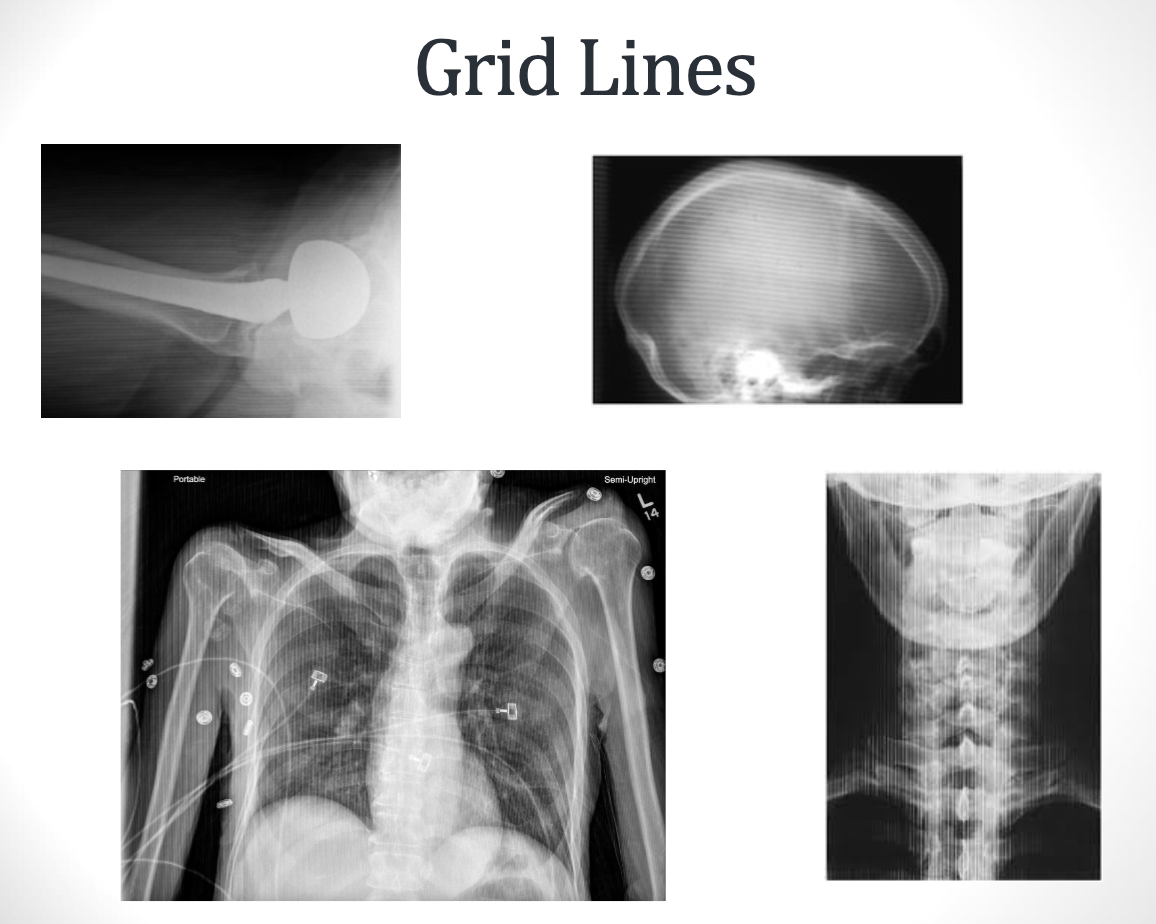
Disadvantage of using Grids
1. Grid lines (can appear as visible lines or patterns on the radiographic image)
2. Increased patient dose
What does Grid Efficiency describe?
The ability of the grid to absorb scatter radiation.
What are the physical factors that affect Grid Efficiency?
Grid ratio and grid frequency.
What does Grid Ratio describe?
The height of the lead strip to the distance (space) between them.

What is the formula for Grid Ratio?
gR = h/d (h=height, d=distance)
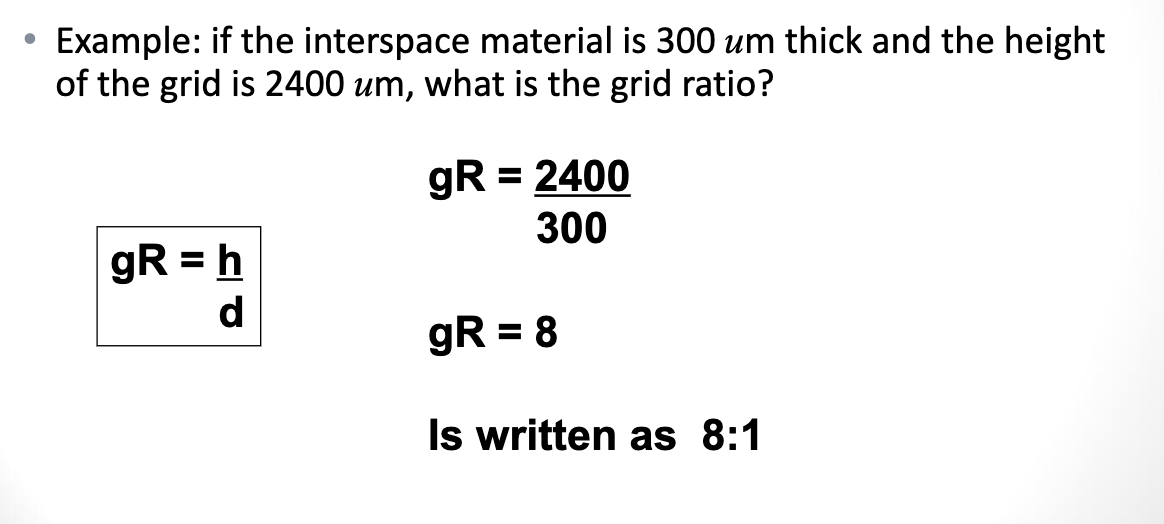
Example: if the interspace material is 300 um thick and the height
of the grid is 2400 um, what is the grid ratio?
gR=8 (written as 8:1)
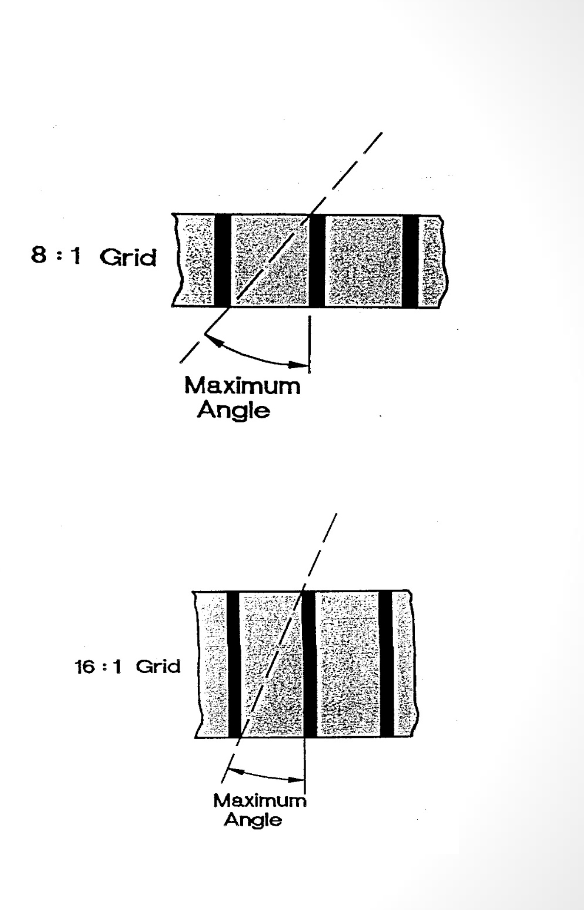
What happens to Grid Efficiency as the Grid Ratio increases?
The greater the grid ratio, the better the grid efficiency.
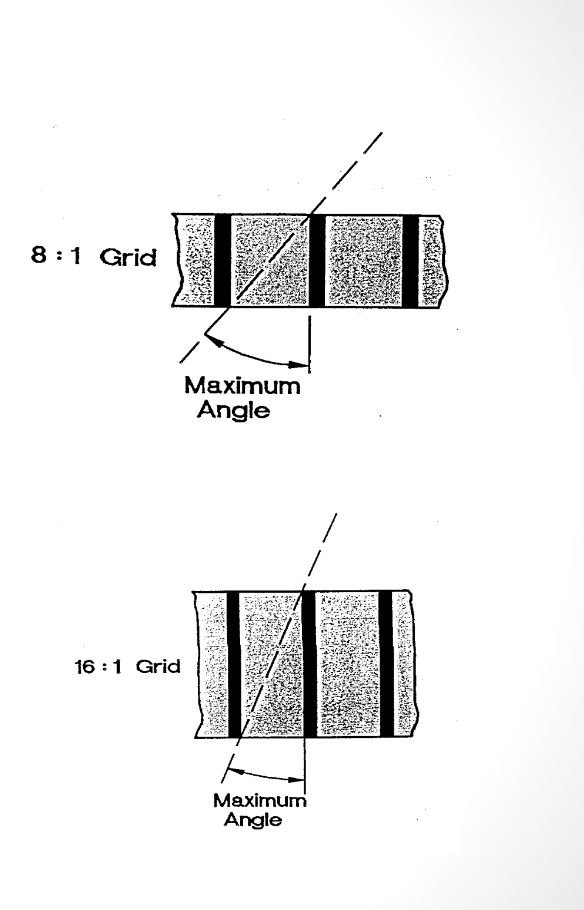
Which absorbs more scatter radiation: a 16:1 grid or an 8:1 grid?
A 16:1 grid will absorb more scatter radiation than an 8:1 grid.
What are the functional factors that affect Grid Efficiency?
Selectivity, contrast improvement factor (K), and Bucky factor (B).
What does selectivity refer to in Grid Efficiency?
The grid’s ability to discriminate scatter radiation from the primary beam.
What is the relationship between selectivity and Grid Efficiency?
The greater the selectivity, the greater the grid’s efficiency.
What does the Contrast Improvement Factor (K) measure?
The ability of the grid to improve contrast.
What is the minimum value of (K)?
(K) will be 1 or more.
What is the typical range of (K)?
(K) ranges from 1.5–2.5.
How does Grid Ratio affect (K)?
Higher Grid Ratios will have higher (K).
What is the formula for Contrast Improvement Factor (K)?
gK = (contrast with a grid)/(contrast without a grid)
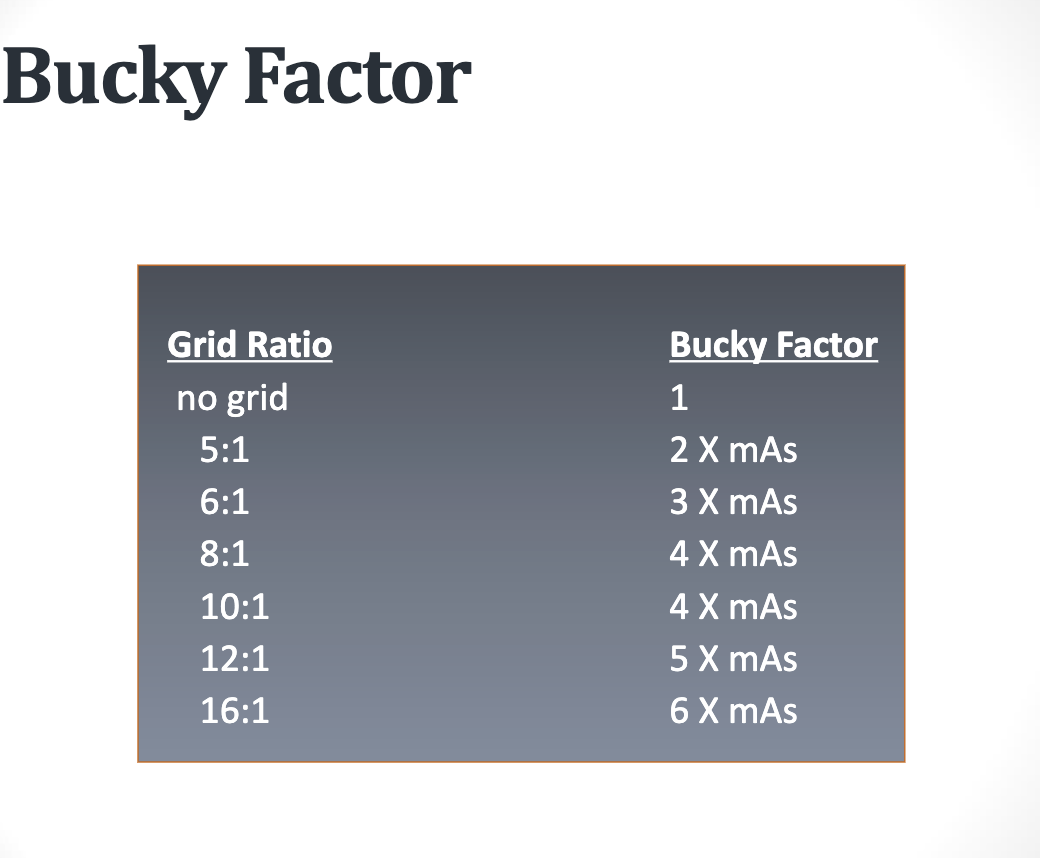
What does the Bucky factor (B) define?
The requirement for increasing exposure factors to maintain the same density with the use of a grid.
What is the formula for the Bucky factor (B)?
B = incident radiation / transmitted radiation.
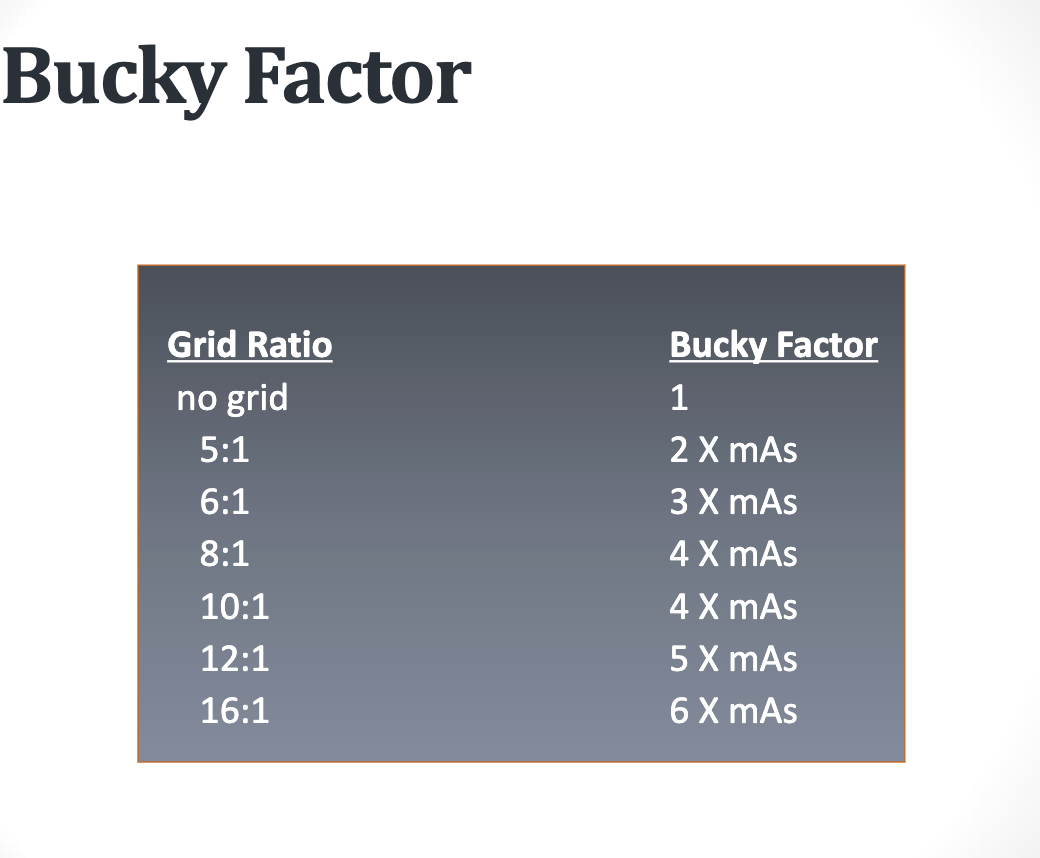
How does Grid Ratio affect the Bucky factor?
The higher the Grid Ratio, the higher the Bucky factor.
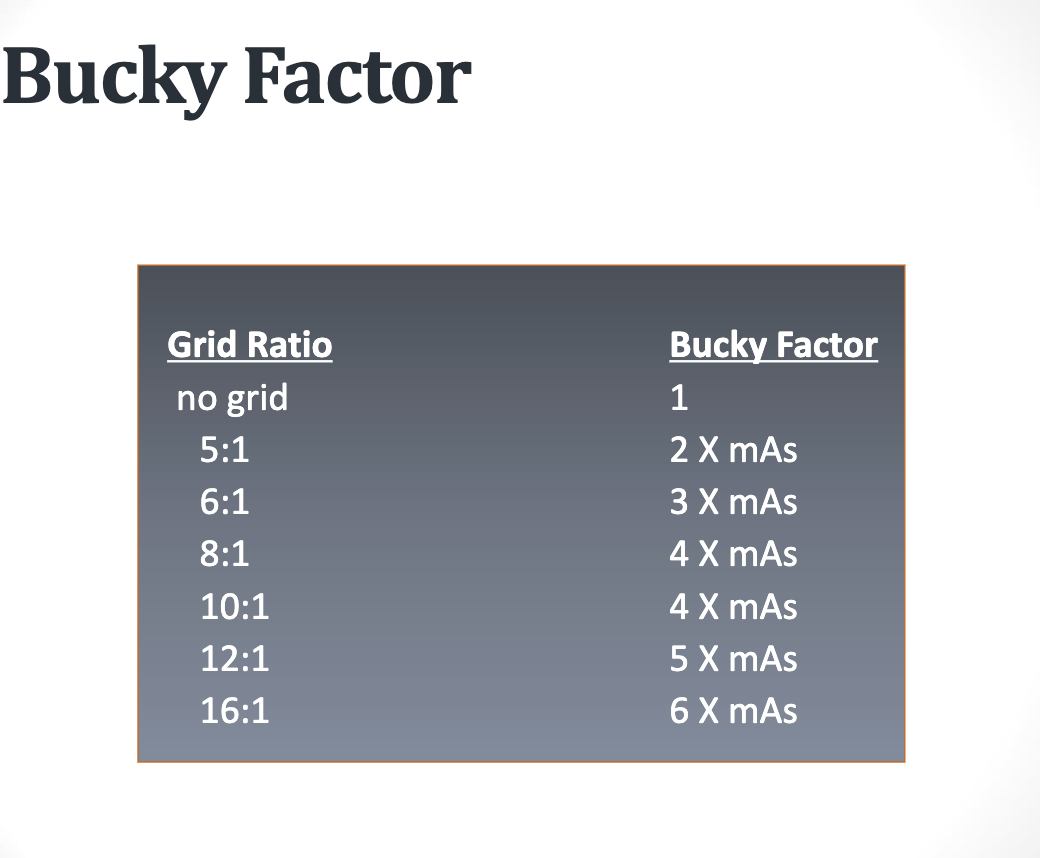
When is the Bucky factor often used in clinical situations?
When mAs or kV is manipulated to compensate for different grid ratios.
Example: A radiograph without a grid requires 110 kV at 2.0 mAs. If a 16:1
grid is used, what would be the new exposure factors?
16:1 is 6 x mAs, 6 × 2 = 12 mAs